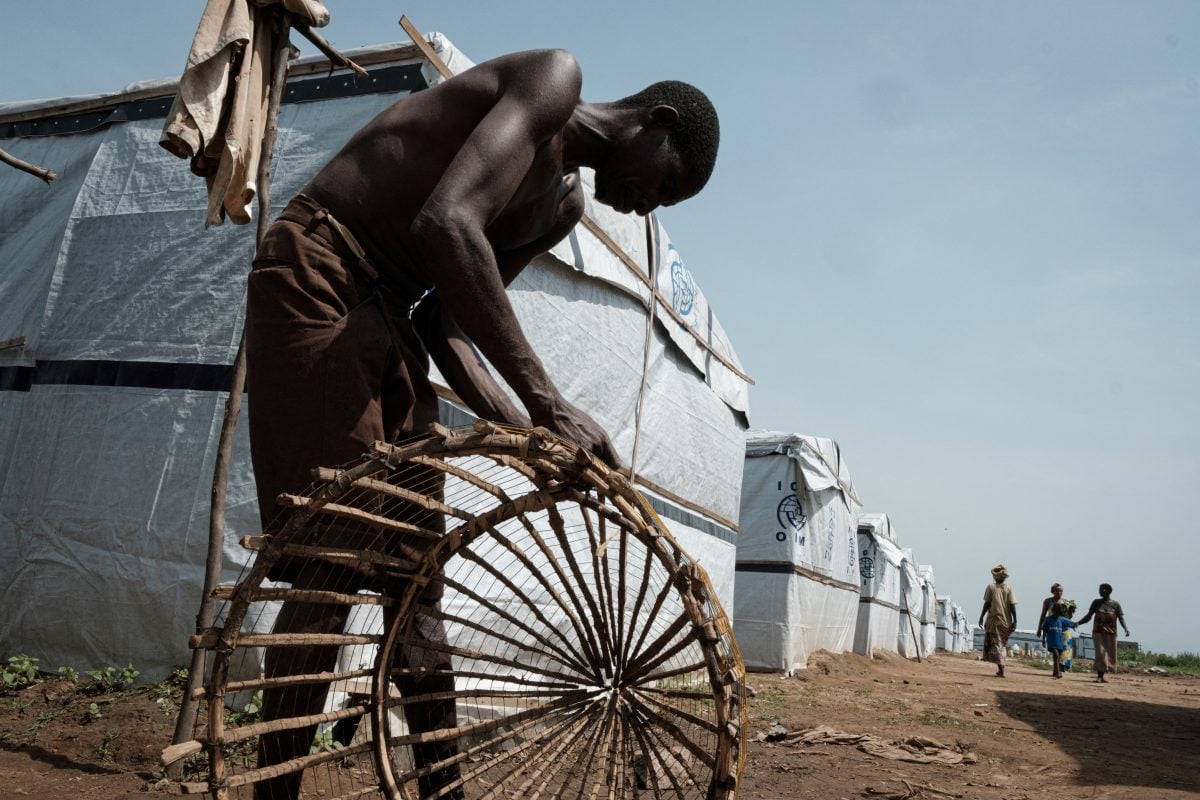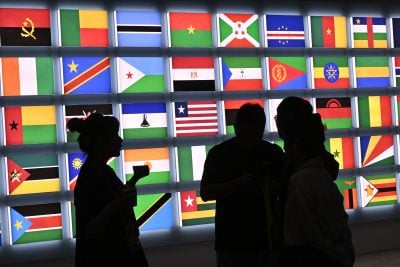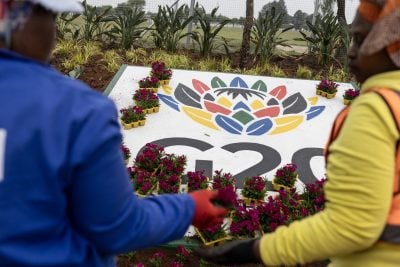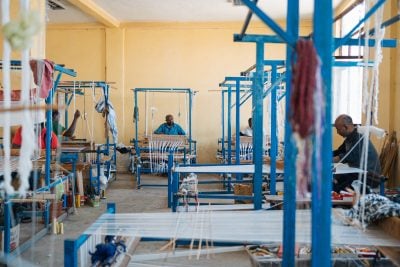On a crowded street in Mogadishu, Fatima, a livestock trader, doesn’t deal in cash. Instead, she coordinates a sophisticated export network to the Gulf entirely on her phone. She’s not an outlier; she’s a pioneer in one of the world’s most innovative and overlooked markets.
For too long, the world outside the continent has viewed Africa’s more than 50m displaced persons through a narrow humanitarian lens. We see tents and aid trucks, not consumers and innovators. Institutional capital has followed suit, ignoring a massive, concentrated, and underserved market generating billions in annual economic activity. This perspective is a profound misjudgment of one of the 21st century’s most significant opportunities for market transformation.
For better or worse, the old model is collapsing. Traditional funding sources have retreated from providing support, including a 44% drop in G7 aid commitments alone. While challenging, this is a potential turning point. There is now a funding vacuum, presenting a major opportunity for market-based solutions that can deliver development outcomes alongside sustainable commercial returns.
This shift from aid dependency to market-driven approaches is already happening. An example of this can be seen in mobile money. Many fragile countries (e.g. Burkina Faso, Libya, Mali) have mobile money adoption rates which far exceed regional and continental averages. This isn’t a coincidence. When traditional systems fail, communities rapidly adopt new economic models.
Somalia exemplifies this transformation. Telecommunications companies filled the void left by a collapsed banking sector, creating one of the world’s most advanced mobile money ecosystems. Today, 82% of Somalis use mobile money compared to just 9% with traditional bank accounts.
The country’s innovation extends beyond payments, as many large businesses operate through multi-hub models – maintaining formal registration in stable countries while conducting informal operations in fragile areas. Combining this with clan-based trust mechanisms and technology integration has allowed many firms to scale. One example of this can be seen in the livestock trade, which operates through sophisticated mobile-based ordering systems and WhatsApp coordination networks cutting across borders.
The logistics sector in fragile contexts is also bridging the informality gap. Modern logistics infrastructure serves humanitarian needs across the continent, dwarfing many commercial operations in scale and complexity.
The World Food Programme alone manages over 600 warehouses globally, coordinating multi-modal transport across challenging terrains using centralised coordination systems and diversified delivery mechanisms. These networks represent ready-made infrastructure that private partners can leverage, transforming humanitarian supply chains into commercial pathways for market access.
Concentration creates opportunity
The diverse opportunities for investment in areas of fragility are interconnected through economic concentration. Displacement brings large populations together, creating a critical mass of consumers and labour that wasn’t previously achievable in diffuse, rural settings.
These displacement areas function as de facto special economic zones (SEZs), sharing the fundamental characteristics of concentrated demand, available labour, and the potential for streamlined regulatory frameworks, making them ripe for investment.
Jordan’s refugee integration model demonstrates this potential. The country established 11 SEZs near major refugee populations, creating a direct link between displacement and economic opportunity. Companies operating in these zones and meeting a minimum 15% refugee employment threshold gain preferential EU market access.
This simple but powerful policy demonstrates the commercial viability of displacement-focused economic zones, generating over 90,000 work permits and contributing to manufactured export growth.
This concentration effect plays out across the continent. Kenya’s Kakuma refugee camp demonstrates how displacement-driven concentration can generate substantial economic activity without established policy frameworks.
With over 200,000 refugees and host community members, population densities exceed 1,000 people per square kilometre. This concentration of refugees creates $56m in annual economic activity, and has permanently increased the regional GDP by 3.4%. These figures illustrate how concentrated populations drive economic growth, regardless of legal status.
To succeed in catalysing private sector investment in fragile contexts, we must move beyond a project-by-project mentality and adopt an ecosystem development approach. This means creating symbiotic relationships where improving consumer welfare increases spending power, driving demand for private sector partners while advancing development outcomes.
This approach requires three core elements: Value chains that connect displaced people as both producers and consumers, leveraging their skills while accessing host-region markets; blended finance mechanisms that de-risk initial investments with patient capital, building a bridge to commercial viability: and regulatory innovation that enables, rather than constrains, economic participation.
This ecosystem-based approach has borne fruit in the financial sector. MyBucks Banking Corporation, for example, established the world’s first branch in a refugee camp in Malawi, achieving profitability in their first year by simply accepting UNHCR registration cards as valid identification.
By removing a major access barrier, MyBucks integrated itself into the local economic ecosystem, generating a sustainable business model. This success has been replicated at scale: Equity Bank, one of the continent’s premier financing institutions, has partnered with major international organisations such as the IFC and FSD Africa to provide banking services to displaced populations. Such collaborations demonstrate how private finance can leverage partnerships to de-risk investments and create a larger, more impactful financial ecosystem.
Similarly, Inkomoko, Africa’s largest lender to displaced populations, has disbursed $7.7m with a 95%+ repayment rate, creating over 40,000 jobs. Inkomoko’s approach highlights the power of blended finance, using patient capital to build a bridge to commercial viability while connecting displaced people as both producers and consumers in a functioning value chain.
The next frontier
As traditional funding shrinks, private sector creativity becomes essential for developing sustainable market opportunities that support livelihoods and economic integration. This represents a fundamental shift from dependency-based aid models toward market-driven approaches that create lasting economic value for both displaced populations and host communities.
Organisations like the Amahoro Coalition are pioneering this transformation by acting as a trust bridge, strategically connecting the private sector with displaced communities. By providing private businesses with access to curated networks of skilled individuals and helping them see the untapped talent and business opportunities within these populations, Amahoro facilitates market access.
The coalition also ensures a symbiotic relationship by engaging community leaders to co-create opportunities and advocate for the economic rights of displaced people through forums and intensive training, creating sustainable economic ecosystems.
Through such partnerships, displaced populations gain access to economic opportunities as both consumers and producers, while private sector partners discover new markets and talent pools. Supporting the economic participation of displaced populations is not just moral, but a commercially viable and scalable solution for Africa’s growth. By turning aid dependency into economic opportunity, we can unlock a new frontier of prosperity for all.
Want to continue reading? Subscribe today.
You've read all your free articles for this month! Subscribe now to enjoy full access to our content.
Digital Monthly
£8.00 / month
Receive full unlimited access to our articles, opinions, podcasts and more.
Digital Yearly
£70.00 / year
Our best value offer - save £26 and gain access to all of our digital content for an entire year!

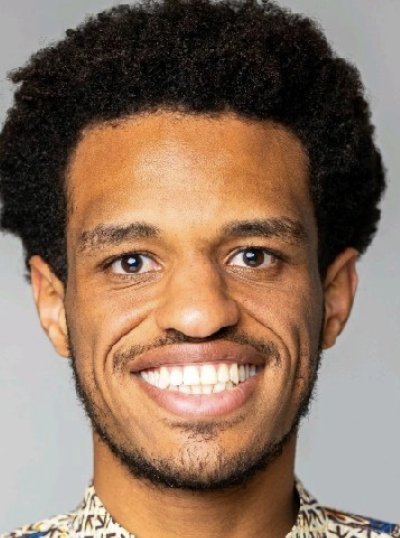
 Sign in with Google
Sign in with Google 